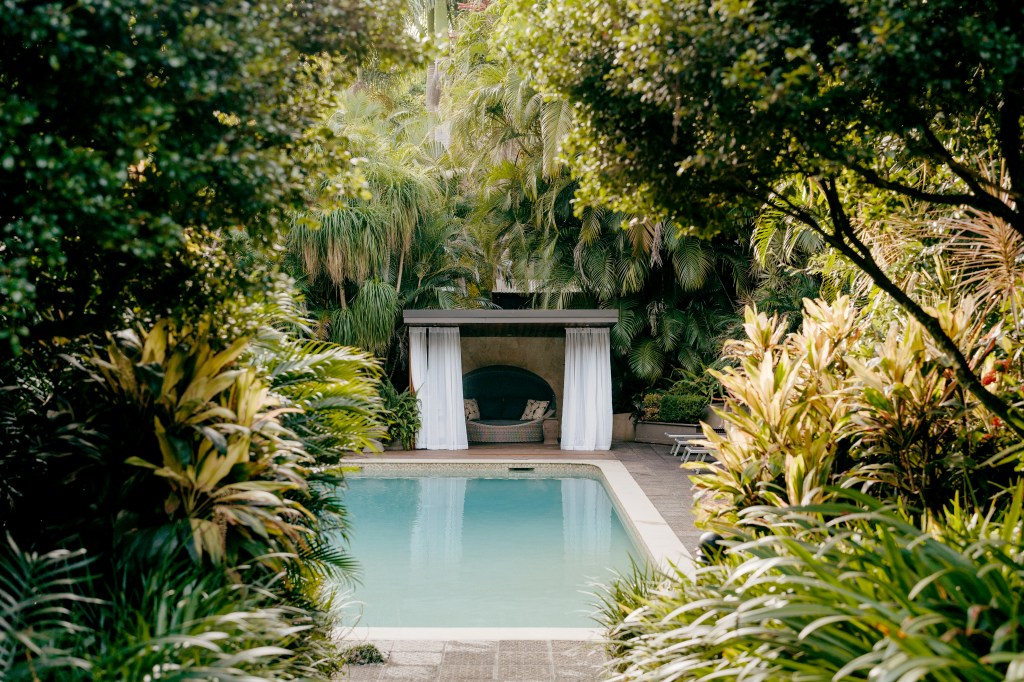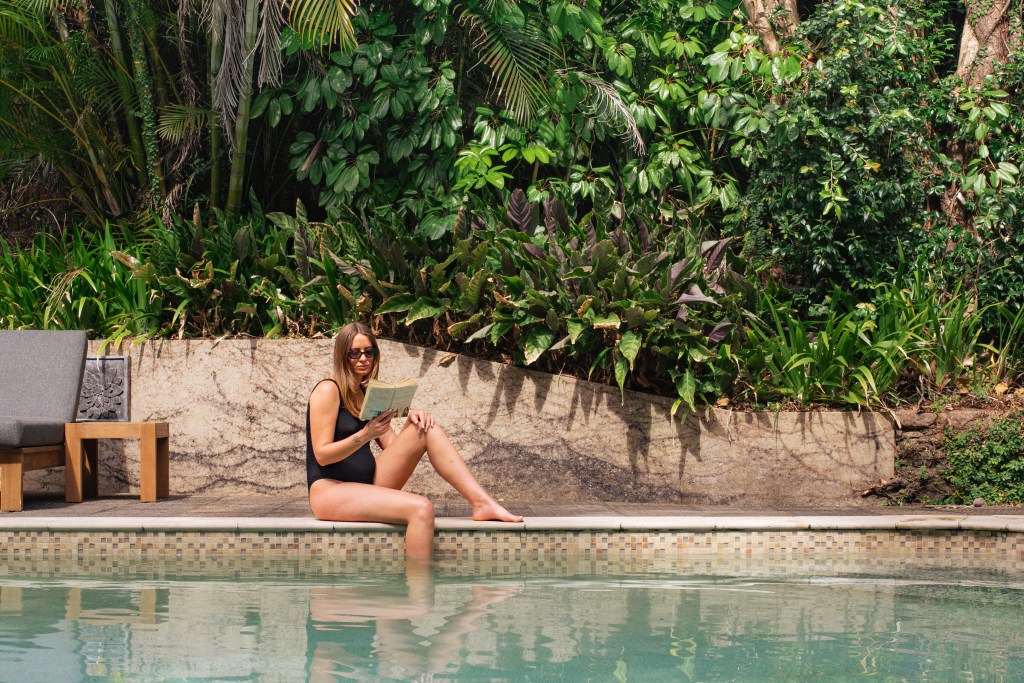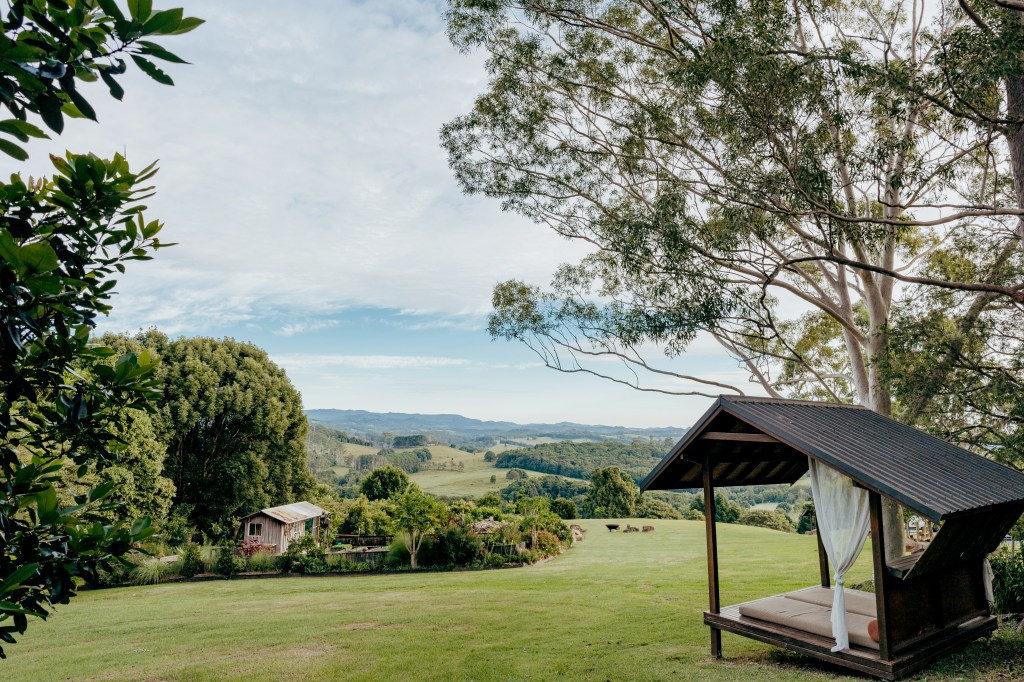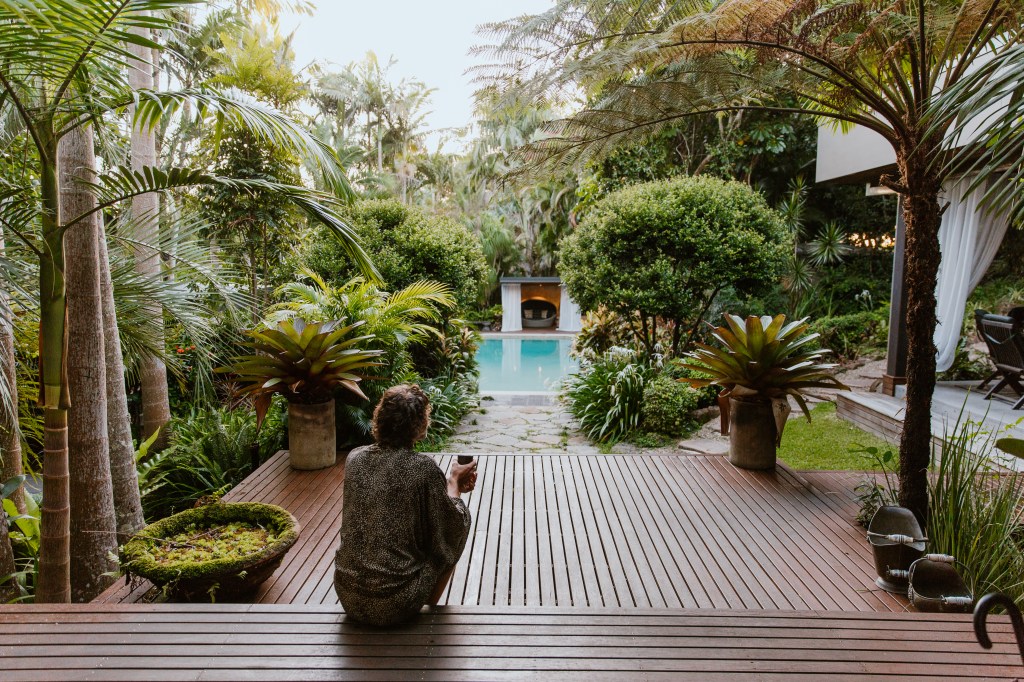Tucked away in the Byron Bay hinterland, Gaia Retreat & Spa has become a sanctuary for those looking to switch off and reset ever since it was co-founded by Olivia Newton-John in 2005.
This story was featured in Issue 15 of Forbes Autralia. Tap here to secure your copy.

The therapist advises me to move slowly as I finish my 90-minute traditional Chinese medicine session in the lush rainforest. “We’ve done a lot of work today,” she says, her words an instruction to let the process settle.
Lying there, listening to the hum of the rainforest, I felt a profound sense of lightness. There must be a word for this perfect intersection of relaxation and energy – because that’s exactly where I am.
Between this session and the 90-minute lymphatic massage I had earlier that day, I can feel the toxins draining from my body, leaving me feeling clearer in the mind and completely present.
“You’ll feel different in the next few hours, so take your time,” the therapist says before leaving. Slowly, I slip back into my robe and slippers and make my way back through the rainforest to the magnesium pool, where a cup of warm ginger tea awaits me.

It’s my third visit to Gaia Retreat and Spa, the renowned wellness resort co-founded by Olivia Newton-John in 2005. Nestled in the Byron Bay hinterland, Gaia has become my sanctuary for whenever I feel I need a bit of time out – a break from the relentless pace of work and a need to disconnect from technology
While on my previous visits, I opted for classic spa rituals – massages, facials and yoga – I wanted something more this time. The world of wellness has evolved, and so have the treatments, so I decided to go for the latest treatments I’ve been hearing more and more about.
Gaia’s roots and healing energy
I wouldn’t describe myself as particularly “woo-woo” – but Gaia has an undeniable magical feel about the place. Some attribute its energy to the ancient songlines (Aboriginal walking routes) running beneath the sanctuary, which are believed to ground and nurture the soul. Others point to the lush Bundjalung Country is rests on, the volcanic soil of the Wollumbin shield crater – which last erupted 23 million years ago – imbuing the land with a unique vitality. Whatever the source – visitors often describe the deep sense of peace and connectedness you don’t find in many places.
Set on 10.5 hectares of rolling Byron hinterland, Gaia is perched atop the highest peak of the hills behind Byron Bay, a region often described as the healing capital of Australia. Originally known as “Cavanbah” by the local Arakwal people of the Bundjalung Nation, Byron Bay has long lured everyone from hippies to executives seeking to live in harmony with Mother Earth.

Gaia was named after the Greek goddess of the Earth, and its very design reflects harmony with nature.
The central Kukara House, with its high-beamed ceilings, organic wood and soft cream and tangerine fabrics is like a cocoon of comfort. From here, the space spills out to the expansive Tevana Deck – an idyllic spot to watch the sunrise or curl up with a book after dinner. The accommodation ranges from the forest-framed Layana Rooms to the Kamala Terrace with its private infinity pool.
Local elders suggest that part of the property, like the Samira lookout, was known as “women’s land” or women’s healing grounds – a claim hard to dismiss after spending several hours sitting looking out at over the valley sunsets, enveloped by a sense of calm. Even Western scientists might concede to Gaia’s magic, noting the magnetic frequencies attributed to the global magnetic structure of the planet.
The evolution of wellness
Gaia has always been about “wellness your way”, with an emphasis on mind, body and soul. But as wellness trends have evolved since Gaia’s inception, so too have the treatments on offer.
“Corporate burnout has led to employers and society shifting to adopt a holistic wellbeing mindset, focusing on embracing balance in life and at work,” says general manager Emily Griffin.
“Some high-performing professionals may need a technology detox to “switch off” from their day-to-day and reconnect with self. While others may be searching for deeper meaning in their life’s purpose, which can also cause burnout.”
Emily Griffin, General Manager
The rising longevity trend – people seeking ways to live longer, healthier, and more balanced lives has led to new offers. Gaia’s Rebalance Retreat, for example, caters specifically to women navigating life’s transitions from career shifts to menopause. The program is designed to address gaps in traditional healthcare by offering tailored treatments based on symptoms and personalised wellness plans.

“The rise of flat-age living is becoming prevalent in Australia, allowing us to connect with guests through values and themes, not age or generational stigmas. This is supported by the longevity trend we are seeing, where Australians are focusing on living longer through the optimisation of their lifestyle to live better, longer.”
Another standout trend is the fusion of Eastern and Western philosophies. Treatments like lymphatic drainage, sound healing, and traditional Chinese medicine are no longer seen as alternative but complementary – backed by tradition and modern science. My own experience with Chinese medicine at Gaia, focused on energy realignment, left me marvelling at its profound physical and emotional impact.
Wellness meets innovation
According to the Global Wellness Institute, the global wellness industry was valued at $6.32 trillion in 2023, 25% larger than it was in 2019, outpacing sectors like sports and pharmaceuticals. This growth reflects an aging population and an increased focus on mental health, driving demand for everything from mindfulness practices to high-tech treatments.
At Gaia, wellness innovation goes beyond traditional spa treatments. My daily schedule included sound healing, LED facials, and hypnotic therapy – a blend of ancient wisdom and cutting-edge technology. During my LED facial, for instance, the therapist incorporated reflexology and arm massages while the bright light worked its magic on my skin. When I looked in the mirror afterwards, I did feel – dare I say it – ten years younger.
Why Gaia stands out
What sets Gaia apart is its ability to compel guests to truly disconnect. You’re missing the point if you arrive expecting to scroll through your phone by the pool. This is a place for surrender – to quiet, stillness, and to yourself.
On my first day, I found it difficult to sit in the sauna without my mind drifting back to work. But by day three, the energy of Gaia had seeped into my body and mind. Morning yoga on a hill overlooking the valley became my favourite ritual, one I vowed to carry back to Sydney. Each morning, it reminded me why this intentional pause was worth it.
For years, holidays for me meant indulgence – overloading the senses with rich food, wine, and nightlife. Gaia, however, offers a new kind of escape: restoration. Its therapists, naturopaths, and yoga instructors provide a roadmap for renewal, arming guests with tactics to sustain balance long after they’ve left.
If the numbers are anything to go by, I’m not alone. Wellness travel is booming because, more than ever, people are seeking what Gaia delivers: a moment to slow down, reconnect, and return to life stronger, lighter, and clearer.
In a world addicted to speed and screens, Gaia’s message is simple: sometimes, the greatest luxury is learning to stop.




